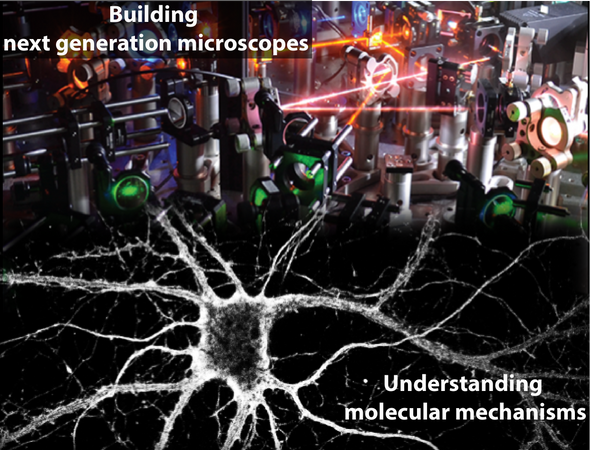Research Interest

Fluorescence microscopy is the most frequently used microscopy technique in the life sciences. Besides providing molecular specificity and sensitivity, fluorescence imaging is largely non-invasive; it can image living neurons, tissues and sometime even complex organism where all cellular and molecular connections are preserved and functional. Despite, its unique ability conventional light microscopy is limited in spatial resolution hampering studies at the molecular scale. The revolution in resolution come with the invention and development of light microscopy concepts with sub-diffraction resolution, today commonly dubbed super-resolution fluorescence microscopy. In our lab we constantly develop new super resolution microscopes with the aim to image living cells and tissues in a gentler and faster way without compromising spatial resolution. Our methods bypass the physical limit imposed by diffraction and allow to record images with a spatial accuracy closer to the molecular scales (20-50nm). We take advantage of smart fluorescents probes named reversibly switchable fluorescent proteins to switch ON and OFF their fluorescence in a targeted manner. Light structuring and shaping combined with photo-switching studies are the core of our technology. We also dedicate special efforts to develop open-source software for automated microscope control and image analyses. Altogether we develop new microscope to answer questions still open in the life sciences working back to back with biologists, chemists and medical doctors to merge cross-disciplinary expertise.